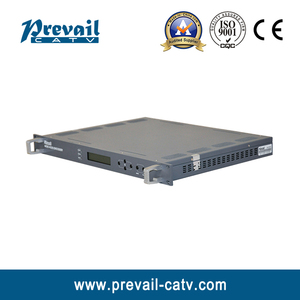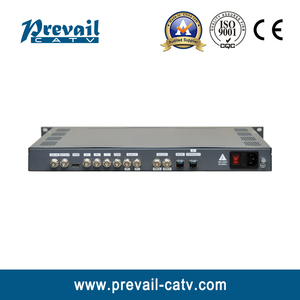Encoder ip asi
(1697 products available)




4 SDI or 4 HD MI Input MPEG2/H.264 HD Encoder IP ASI Out Encoder HD/SD Audio & Video Encoding






8 Full HD/SDI/ASI/RF in RF Out Full HD to DVB-C Encoder Modulator AV to RF Converter Cable TV Equipment




24 Channel Encoder Full HD 1080p MPEG4 H.264 HD in and ASI IP Out HD IP Encoder






IPTV Encoder 8 Channels MPEG4 AVC/H264 HD IP Encoder HD in and ASI or IP Out

24 Channels HD to IPTV IP ASI H.264 MPEG4 Encoder Model COL5011F



Mpeg-2 Mpeg-4 Encoder hd to Ip Asi 4 Audio Stereo with HD HD-SDI AV Input Port






ASI In, IP in , 24 HD in H.265 IPTV Encoder with ASI Out and IP Output






DMB-8820E 24 Channels H DMI 1080P Full HD H.264 Encoder with ASI and IP Output Dvb iptv Encoder for Broadcasting System






Softel IPTV 2 ASI 4 in 1 HD-SDI H 264 IP Encoder
Popular in your industry






ASI/HD H265 HD Encoder 4 Channels 8 Channels 12 Channels Encoder ASI and IP Out






4/8/12/16/20/24 Channel Encoder Full Hd 1080p H.265 H.264 Hd Mi in and Asi IP Out Hd IP Encoder



24 Channel Encoder Full HD 1080p MPEG4 H.264 HD in and ASI IP Out HD IP Encoder






OTV-EP24 24 Channel HD MI HD H264 Encoder With ASI and IP Output Multicast IPTV Encoder for DVB Broadcasting System





24 Channel Signal Hd to Ip Asi Broadcast Tv Equipment Hotel Tv System 24 Ch Asi and Ip Output Hd Video Encoder Encoder Iptv






FMUSER FU-2205 Multi-interface IPTV Digital TV Video an Audio Encoder SDI YPbPr CVBS HD in and ASI IP Out for Broadcasting






4K HD H265 H264 IP ASI 12GSDI Video Encoder for Cable Digital Tv Headend Encoder



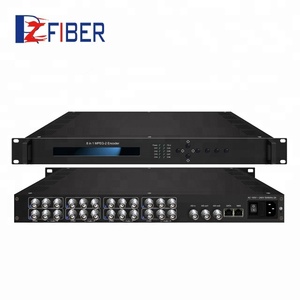
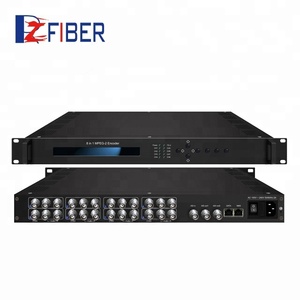

SD Mpeg2 AC3 SDI Encoder H.264 CVBS to ASI/IP SPTS MPTS Encoder with 8 12 24 Channels


iptv Dtv Asi to Sdi Encoder Decoder (DVB-S/S2+ASI+IP+2*CI In,AV+HD-MI+SDI+YPbPr+IP+ASI Out)
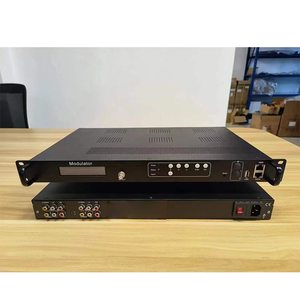
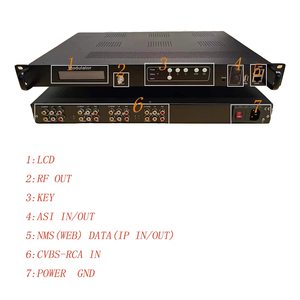

4/8 Channels SD Encoder Modulator Audio and Video Converter,AV ASI to RF Broadcast





8/16/24 FTA Digital Video Encoder Tuner with IP ASI Output Supports DVB-S/S2 DVB-C/T/T2 ISDB-T/ATSC Input HD Audio to IP Gateway






Hot Sales Digital TV Headend DVB Encoder to IP ASI Modulator Series HD Input IP Output for Cable TV Digital Headend




Encoders IP 8 16 24 HD H264 Channel IP GE OUT 1920X1080P ASI AC3 DVB Digital Display






8 Channels Normal TS Streaming HDMI to IP & ASI Converter and HDMI to IP Digital hd Mpeg4 Ip Encoder






GreenGo 4-24 Channel 1080p HD Encoder IPTV HD ASI Encoder IPTV Streaming Encoder






HD Channel ASI Input IP Output DVB-T, DVB-C, ISDB-T, ATSC RF Output MPEG2 MPEG4 HD 4in1 Encoder Modulator




Yatai 3508B IPTV Digital Gateway 8/16/24 Tuners DVB S2/IP/ASI/DVBC/ISDBT/ATSC RF Input Modulator & Encoder Server Application






Yantai Yatai YT3226SA 16/32 AV Inputs, 1 ASI Input, 32 Channels UDP Multicast SD H.264 Encoder IPTV Modulator






4 8 16 24 Channels H264 H265 H.265 CATV Headend IPTV HD MI IP Live Streaming Video Encoder for Digital Cable TV Broadcasting






4 8 16 24 Channels H264 H265 H.265 CATV Headend IPTV HD MI IP Live Streaming Video Encoder for Digital Cable TV Broadcasting






4 8 16 24 Channels H264 H265 H.265 CATV Headend IPTV HD MI IP Live Streaming Video Encoder for Digital Cable TV Broadcasting





Haiwei H9 Portable 3G 4G LTE H.265 IP Video Encoder HD SDI IP Audio Live Encoder for Facebook Twitter Online TV
Top categories
About encoder ip asi
Types of encoder IP ASIs
An IP encoder system is a device that converts analogue signals into a digital format for transmission over a broadband Internet Protocol (IP) network. These Encoder IP ASI have their specific applications, which include betting and gaming, distribution, and contribution.
Encoder enables the transmission of multiple encoded bitstreams over a single medium. These devices transform analogue or digital audio and video signals into compressed data for distribution in broadcast, telecommunications, and broadband industries. Encoder also provides a mechanism for simultaneous transmission of multiple encoded bitstreams over a single medium. Stream encoding is critical to enhance efficiency and reduced cost in media transmission.
The different types of encoder IP ASIs are:
- Video Encoder: A video Encoder transforms video files into streams or downloadable videos. The video Encoder reduces the size of the video file while retaining the video's quality.
- Audio Encoder: Audio Encoders work similarly to video Encoders; they encode audio files into a digital format. These digital formats compress the audio file so that the sound can be downloaded or streamed.
- Data Encoder: Data Encoders take in non-digital data, e.g., analog signals, and convert them into a digital format that can be transmitted across an IP network. Encrypted data is then transmitted and decoded at the other end of the transmission.
Functions and features of encoder IP ASI
There are various functions and features of IP ASI encoders. They include the following:
- Multicast Streaming: An encoder can distribute a single encoded stream to multiple destinations concurrently by multicasting. This enables content sharing across many platforms and devices without using further bandwidth.
- Modular Architecture: A modular design makes it simple and adaptable to add or take away components based on various needs. It makes it possible for different inputs and outputs to be integrated, contributing to system flexibility and longevity.
- Encoding and transcoding: The main purpose of an IP ASI encoder is to convert digital signals into streams that may be transmitted over an IP network. It guarantees dependable transport for further processing, broadcasting, or storage. Moreover, the encoder may convert already encoded audio or video streams to match the demands of various delivery platforms.
- ASI Interface: The Abeco Serial Interface (ASI) is an AFM standard for transporting MPEG-TS over a coax cable, which the encoder must have. This interface is essential for connecting devices in broadcast settings.
- Transport Stream: The encoder must produce a transport stream (TS) to ensure the correct transmission of video and audio data over IP networks. The TS format is essential for streaming CCTV and IPTV since it keeps data packets in order and error-free.
- MPEG Compression: To make real-time streaming possible, the encoder compresses data using the MPEG codec. It guarantees broad compatibility by utilizing a codec that compresses audio and video signals efficiently.
- IP Outputs: The encoder should have numerous IP output ports to deliver stream content to numerous devices, destinations, or platforms seamlessly.
- PID management: For effective streaming, PID (Packet Identifier) management entails identifying and classifying packets in an MPEG transport stream. PID management enables reliable reception and decoding by maintaining correct packet routing and controlling the PID values.
Applications of Encoder IP ASI
Encoder IP ASI have a range of practical applications. Here are some applications:
- Broadcast Transmission: They are mainly used to convert, protect, and control the quality of signals before broadcasting. They assist in encoding the signal, which helps to modulate the carrier wave, therefore, enabling transmission of signal to be broadcasted.
- Surveillance Systems: Encoder IP ASI surveillance systems improve and assist in transmitting CCTV encoder ASI signals for monitoring and security applications.
- Satellite Communication: Satellite communication encoders use ASI for signal transmission between different equipment, which assists in the transmission of television and radio signals between satellites and ground stations.
- Production Facilities: Encoder ASI is used in production facilities to make broadcast-quality encodings for program archives and contribution feeds.
- Streaming Services: Streaming service encoders use ASI to compress and encode multimedia content for distribution.
How to Choose Encoder IP ASI
When purchasing an encoder that outputs ASI IP, it is important to carefully consider various factors to ensure it meets specific needs and requirements. The following are some of the key things to consider when selecting an encoder IP ASI.
- Number of channels: The first thing is to determine the number of channels that the encoder should have. Many businesses will require high-capacity encoders that can process several channels simultaneously. Depending on the requirements, businesses can choose encoders with one, two, four, eight, sixteen, thirty-two, or more channels.
- Types of input: Another important thing to consider is the kind of input. The input is the signal that the encoder will transform. Most encoders utilize Ethernet, ASI, or IP as input, so it is important to ensure that the encoder chosen has the input that matches the input signal source.
- Resolution and compression: A compelling encoder ASI IP should support multiple resolutions, such as 4K, 1080p, 720p, and even SD. It's also necessary to ensure the encoder supports compression methods like HEVC/H.265, AVC/H.264, and MPEG-2. These features can help provide flexibility in choosing the right quality and preserve bit rate.
- Output format and flexibility: Primarily, the output should be IP and ASI. After that, an encoder that provides multiple output formats provides flexibility in distribution and ensures the encoder meets the organization's needs.
- Network protocols: It is vital to ensure the encoder IP ASI supports several network protocols, such as UDP, RTP, RTSP, multicast, and HTTP. These protocols enhance versatility for signal distribution and streaming.
- Scalability: It is wise to select an encoder that is scalable. One that can grow and adapt as the organization's needs change is constantly evolving.
- Reliability and support: Choosing a reputable vendor that offers reliable hardware is essential. The vendor should provide solid post-sales support in case technical assistance is needed.
Q&A
Q: Can encoder IP ASI convert ASI to IP?
A: No. IP encoders can only encode IP streams to ASI. They cannot convert ASI to IP since they are designed to encode IP streams to ASI for distribution to devices that accept ASI signals.
Q: What is the difference between IP and encoder ASI?
A: An encoder that encodes ASI streams is a hardware device, while an encoder that encodes IP streams is a software-based device. The latter can be run on a PC or server, while the former has to be run on a dedicated device.
Q: What are the benefits of an encoder that encodes IP streams?
A: Some benefits include flexibility and convenience. IP streams can be encoded from anywhere in the network, while ASI streams have to be encoded at a specific location. Also, IP encoders are more flexible and easier to upgrade than hardware devices.
Q: Can a single encoder encode multiple streams?
A: Yes, but only if it is a multiple-output encoder. However, for it to successfully encode multiple streams, the encoder must have features such as transcoding, which allows it to transcode multiple different formats, and mappings so that it can map different output streams to different destinations.






















